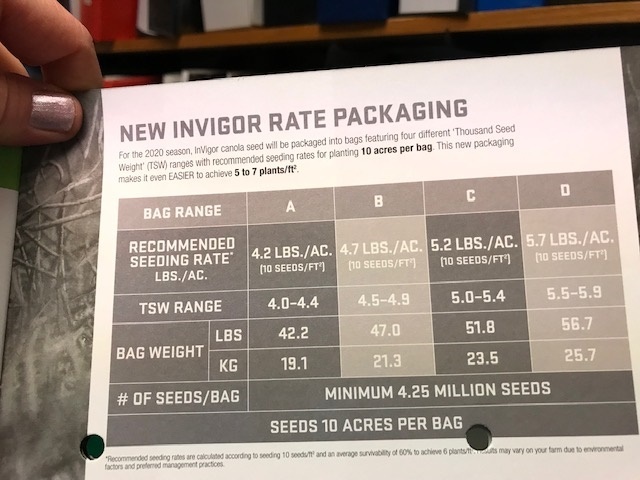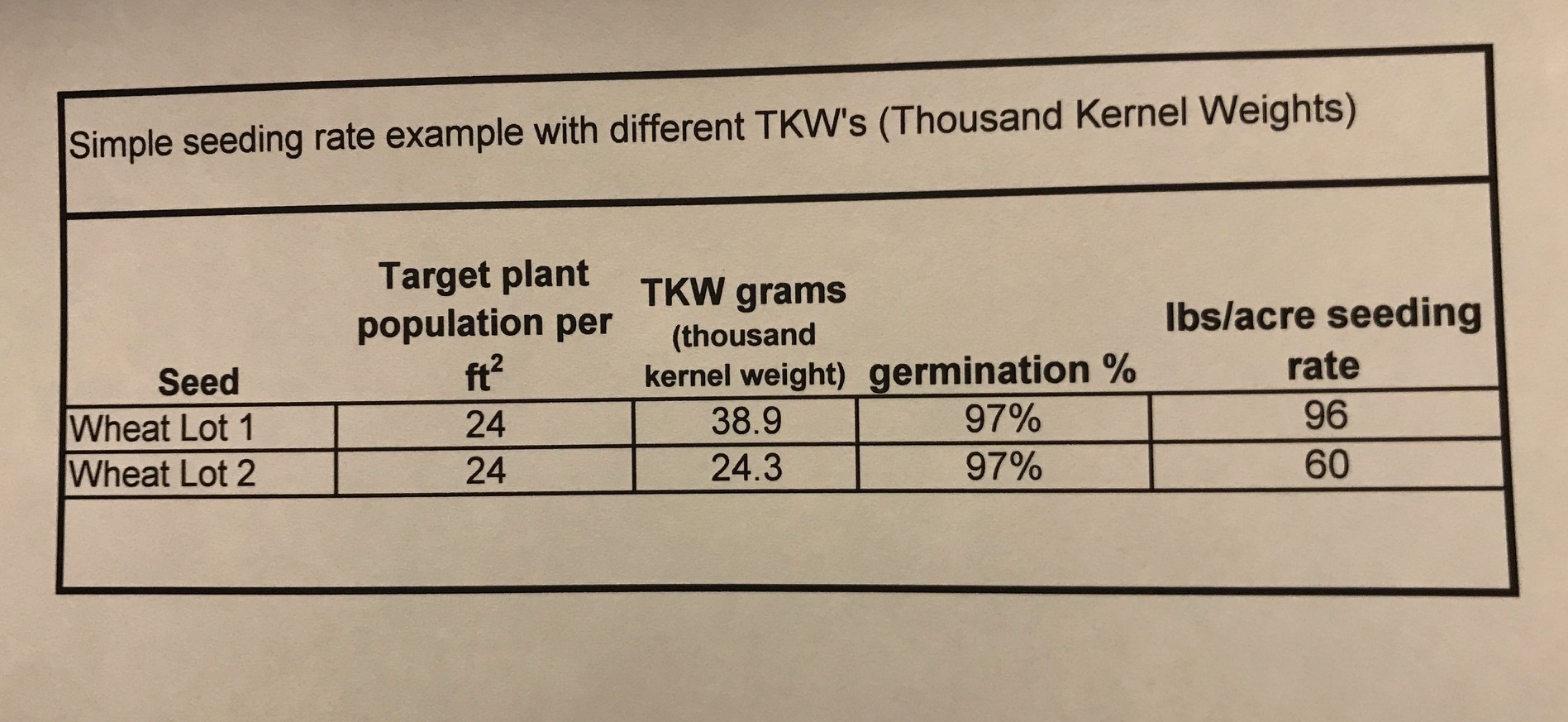(800) 563-7333
October 30, 2018 | Kelly Barany, Chin Ridge Seeds (en-CA)
Tough year for dryland crops from a yield and seed size perspective.
It was a tough year for dryland yields last year. We didn't have rain at the right time and as a result crop yields suffered and it shows when you look at the harvested seed. Some of our pedigreed seed has a smaller seed size this year.
Seed Quality in terms of germination and disease is excellent though.
That said, the germination on all our crops is excellent. Our lab tests are all coming back at >95% germination with 0% fusarium graminearum results due to the nice dry conditions. So the seed quality is right there with the best looking seeds you could find. In addition, with the small seed size, customers can really save money on seed cost.
Small seed size can allow you to reduce your seeding rate.
Agronomists advise farmers to seed their land to reach a certain target plants per square foot population. The target population varies by crop and by land potential (for example you would seed heavier on irrigation than you would on dryland typically in southern Alberta). Your seeding rate is determined by a calculation which includes your target plants per square foot, your seed weight (thousand kernel weight), and your seed's germination rate in %.
More and more farmers are using this calculation to determine their seeding rates. In fact, I see that the canola companies are now recognizing seed size and adjusting their seeding recommendations and packaging.
For example, see the new bag sizes for Invigor canola:

So the canola companies are changing their bags to reflect the relationship between seed size and seeding rate per acre.
How seed size affects your seed costs in cereal crops:
Since cereal crops are typically sold by bushel based on a standard bushel weight, you are essentially paying for cereal seed by weight. So the seed size (as determined by thousand kernel weight in grams) is key to determining your seed cost per acre.
For example, if you are seeding wheat seed and aiming for a plant population of 24 plants per square foot, then there is quite a difference in the required seeding rate between the two lots below:

Both of the seed lots in the example above would produce the same excellent plant stand. However, lot 2 has a smaller seed size, meaning that it has more seeds per pound. So the smaller the seed size, the less pounds required to achieve the same seeds planted per square foot. So in the example above if both wheat lots had the same cost per bushel (pound), the wheat lot with the lower thousand kernel weight will result in a lower cost per acre. Said another way, using the lot with the smaller seed size, you could seed more acres with the same pounds of seed.
Many factors to consider when buying seed.
There are many factors to consider when buying seed and one of them is cost. It is possible to achieve a great plant stand for less cost with a smaller seed size. So thousand kernel weight should be an important factor to consider when buying cereal seed.